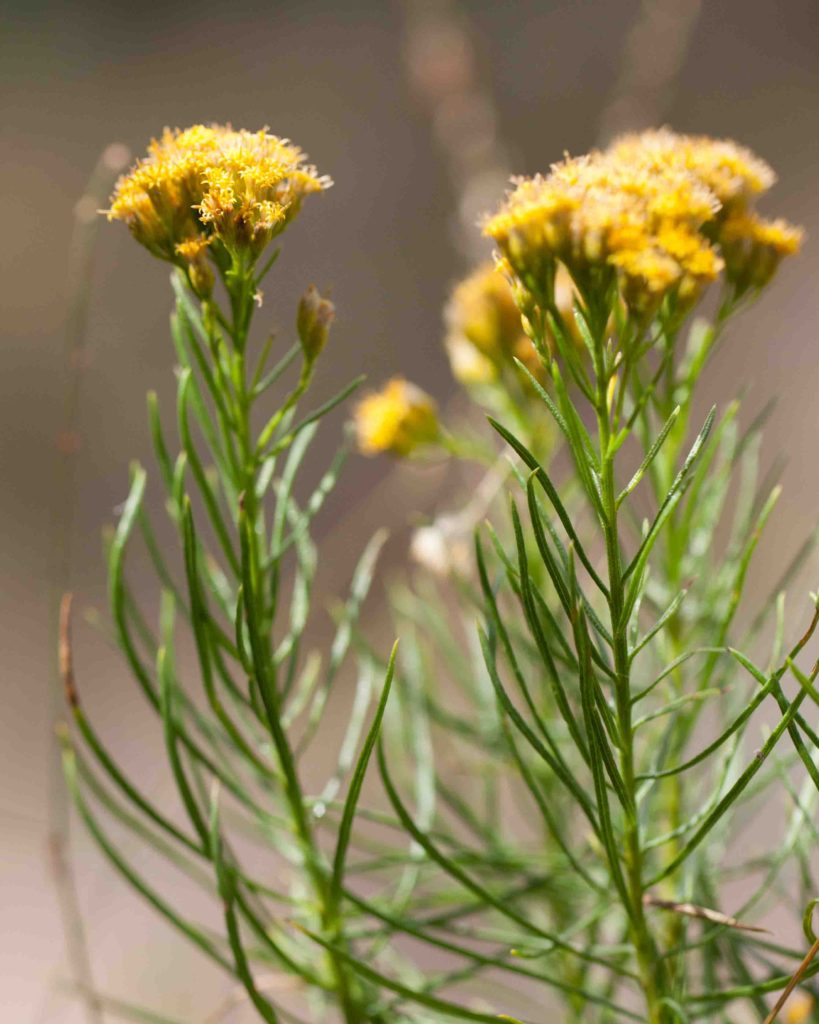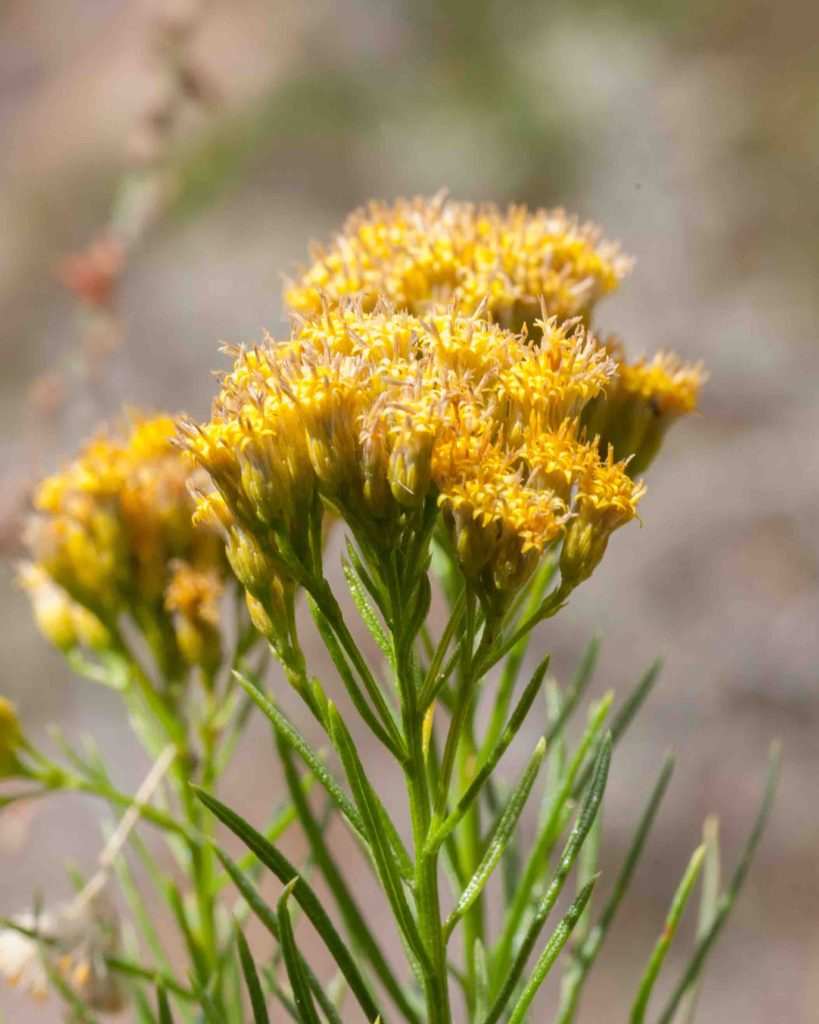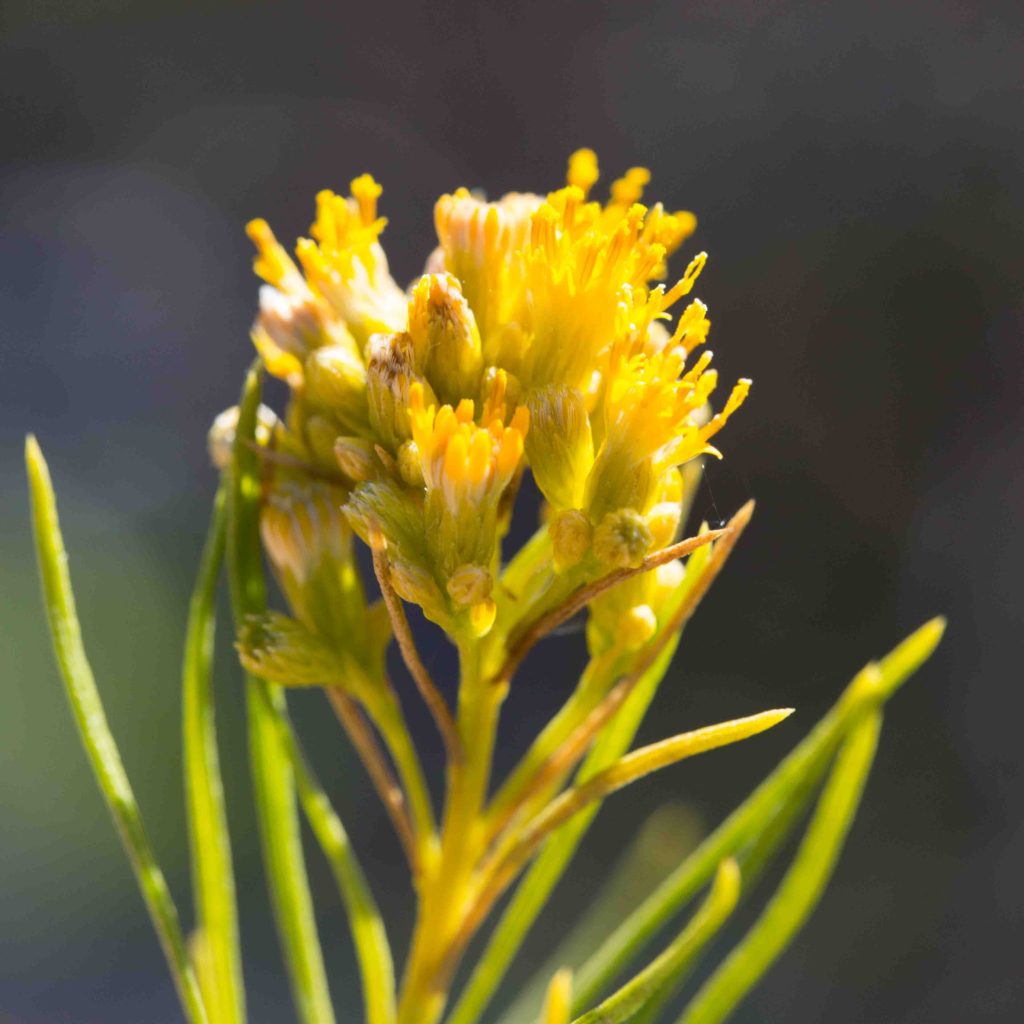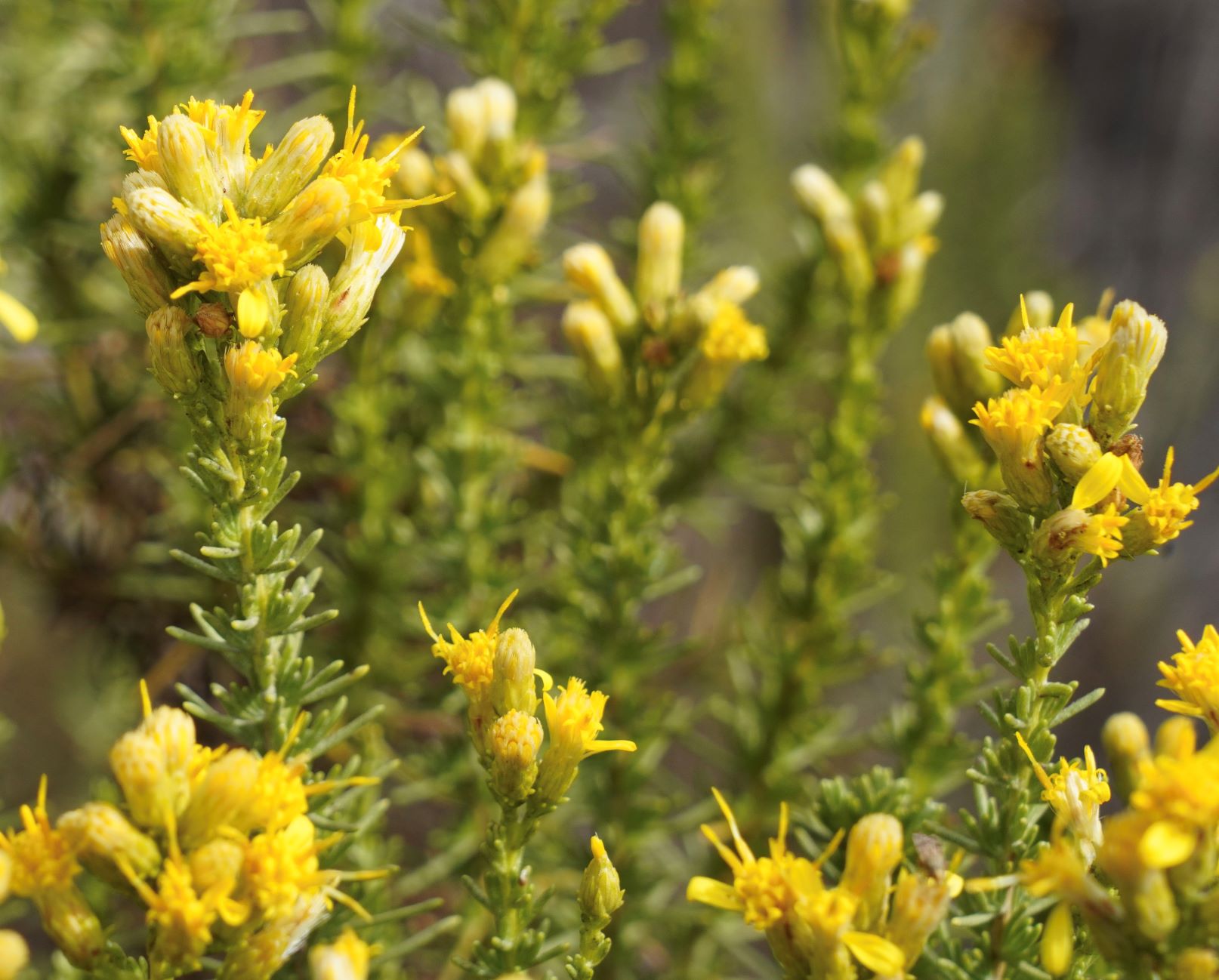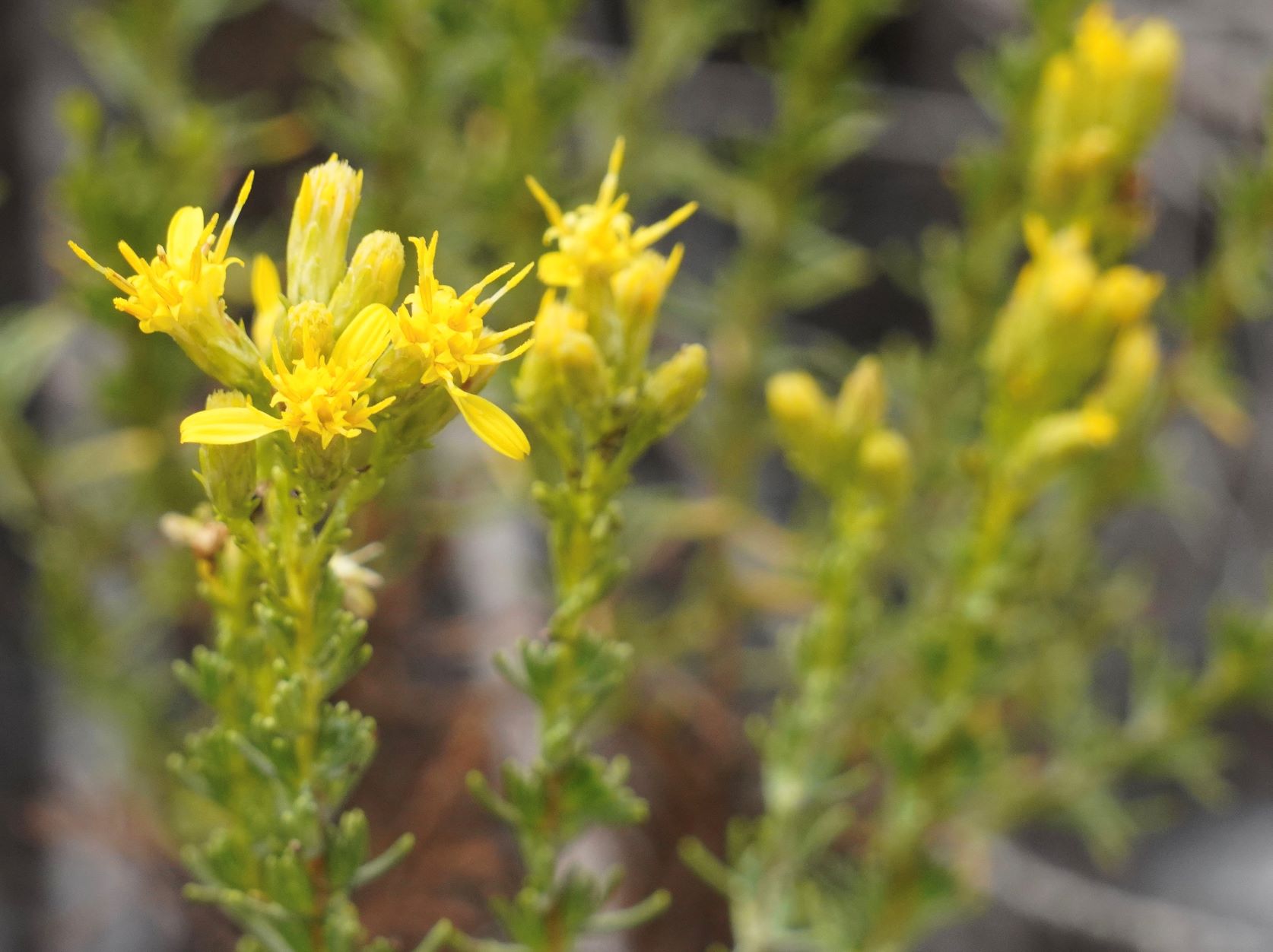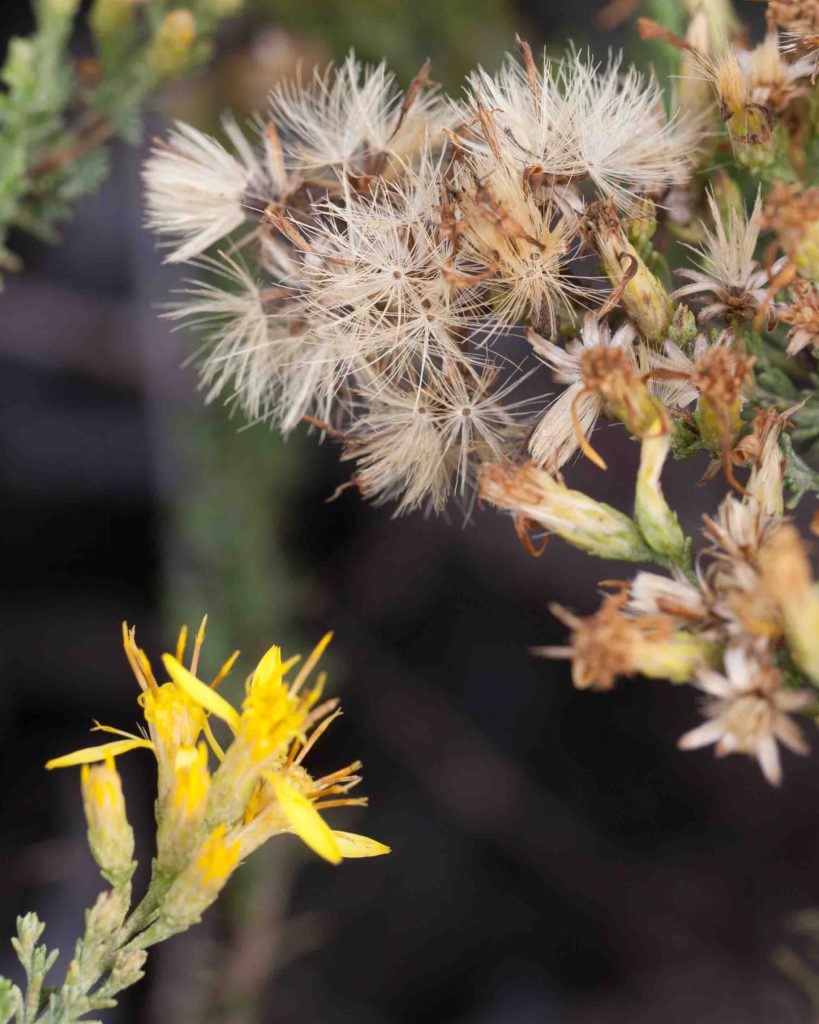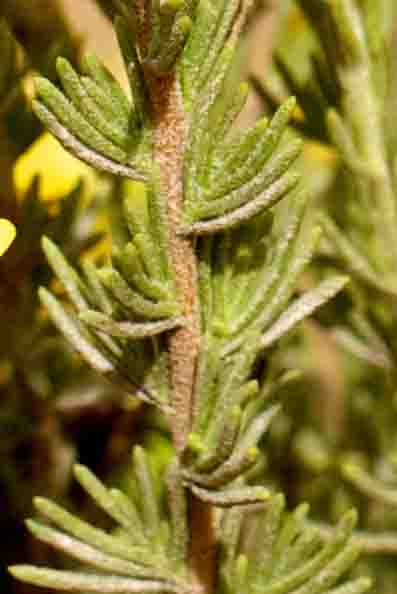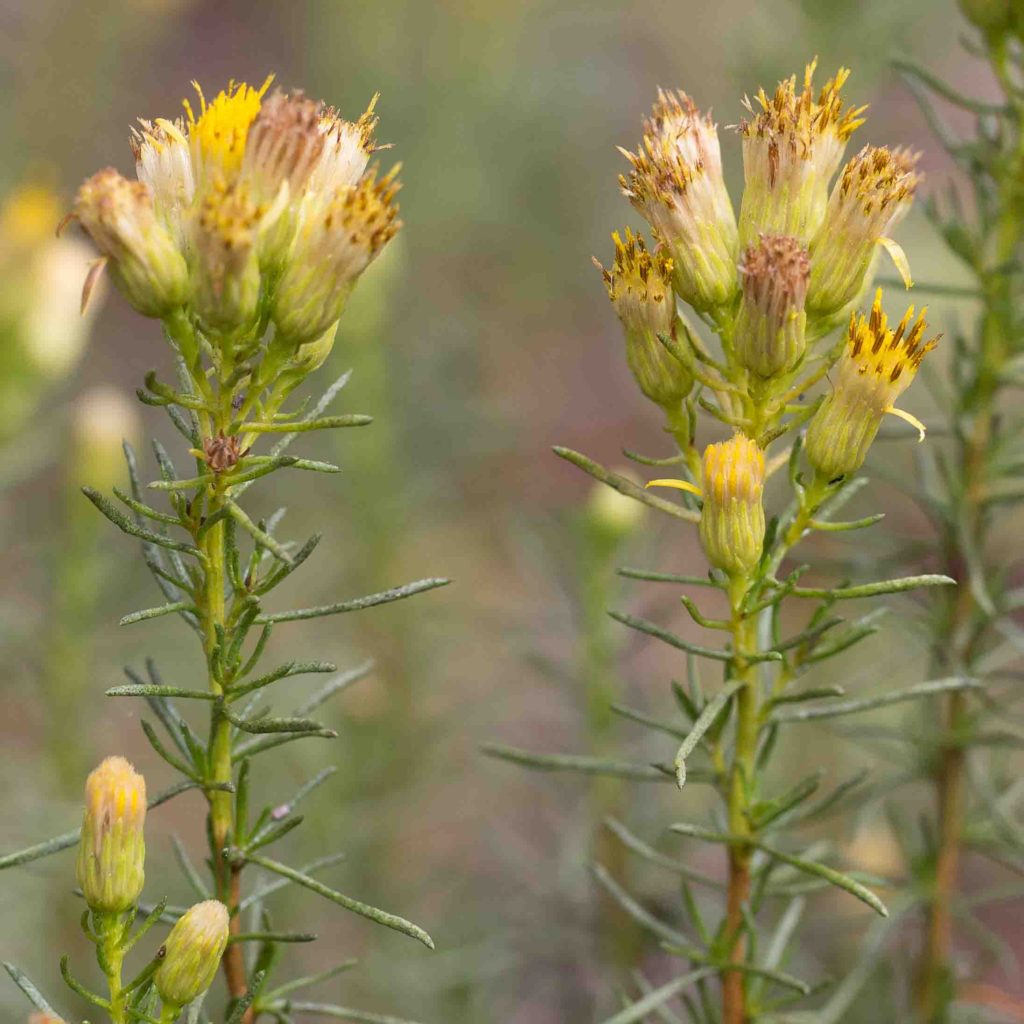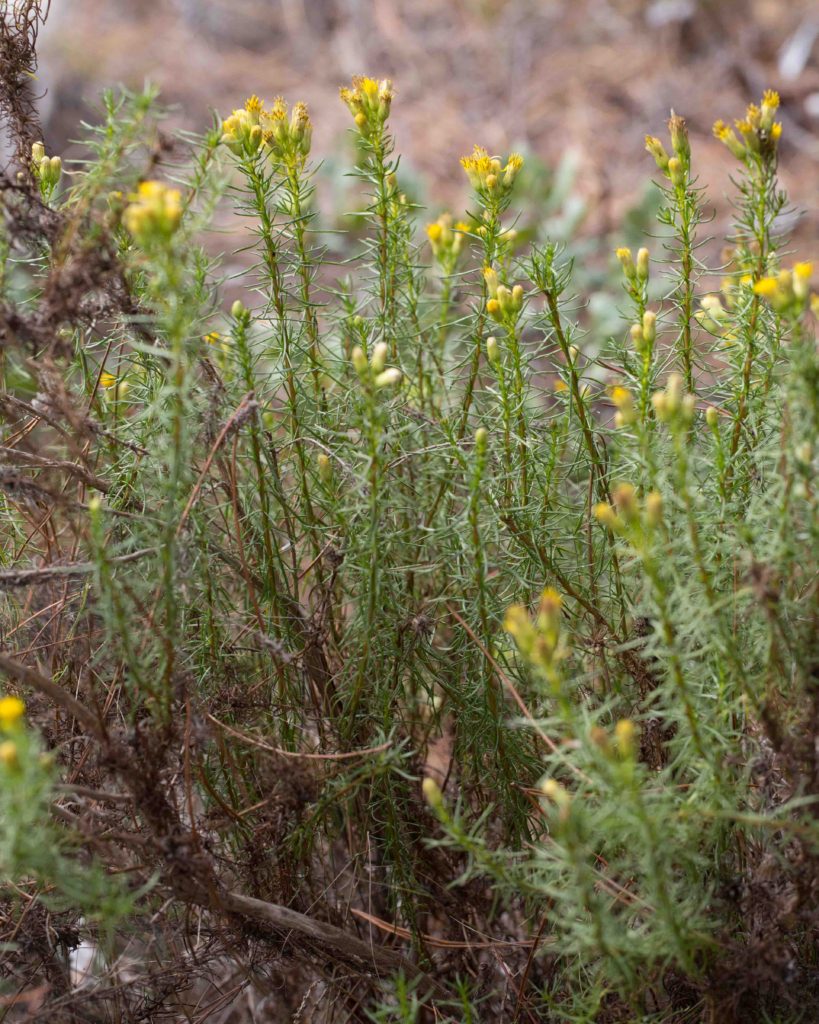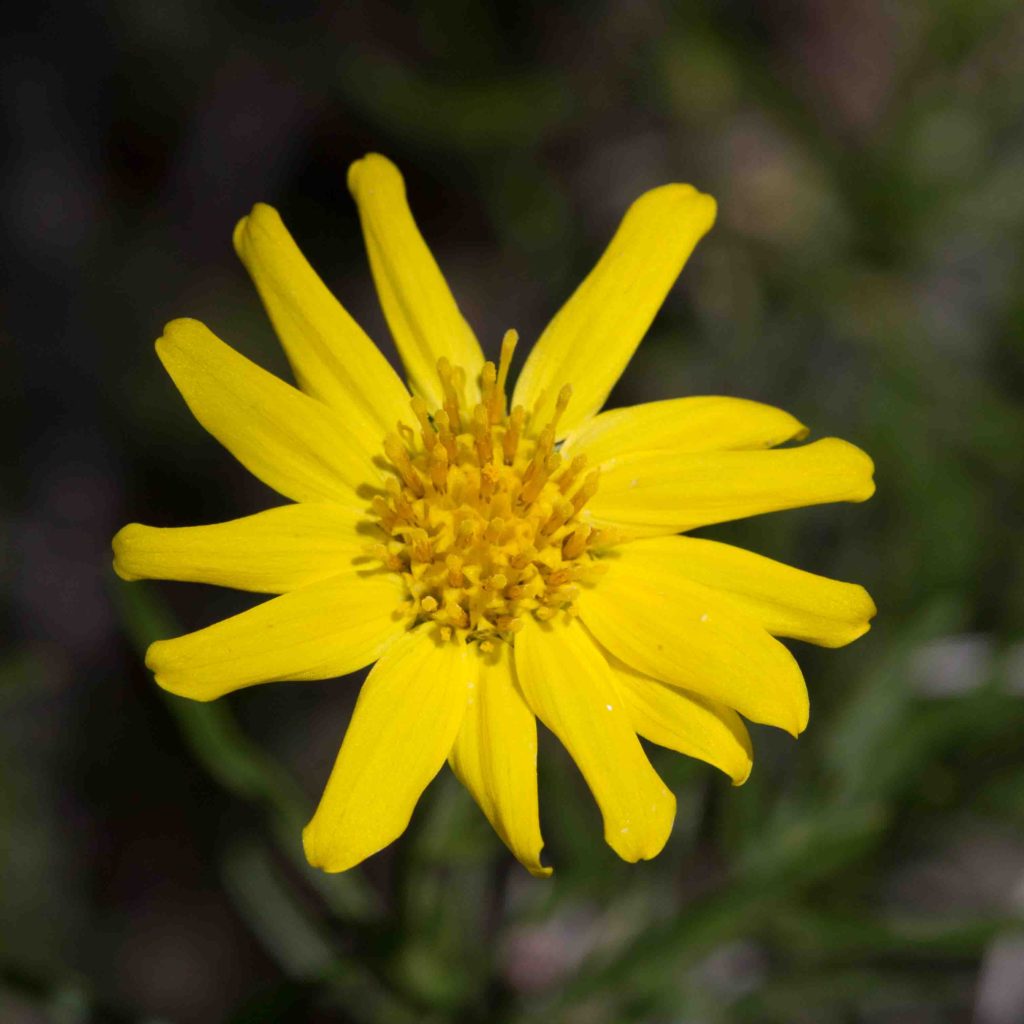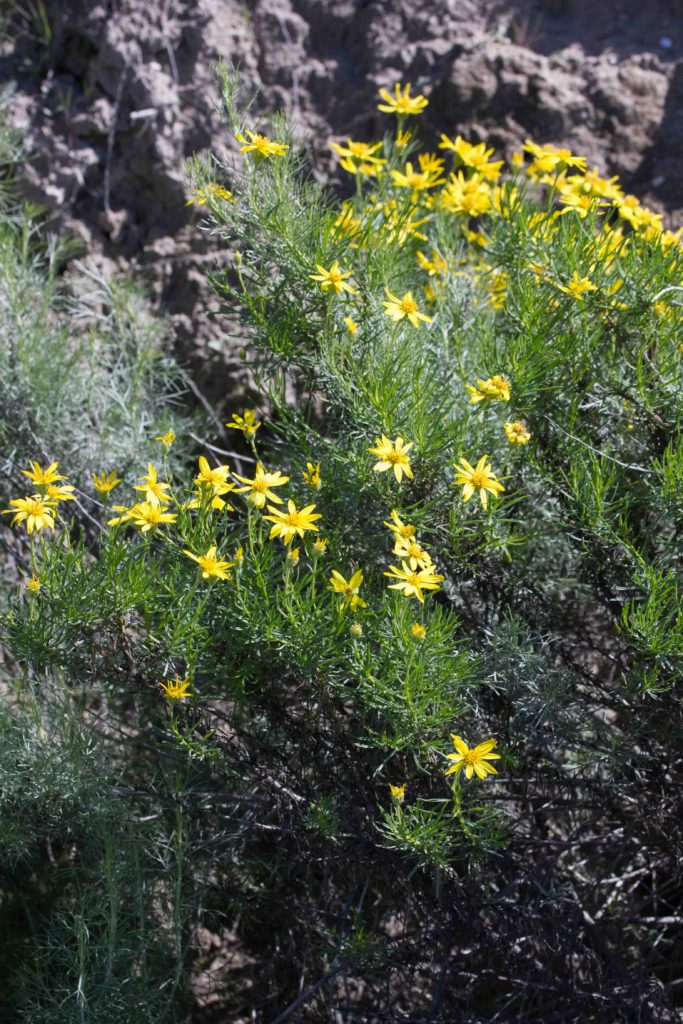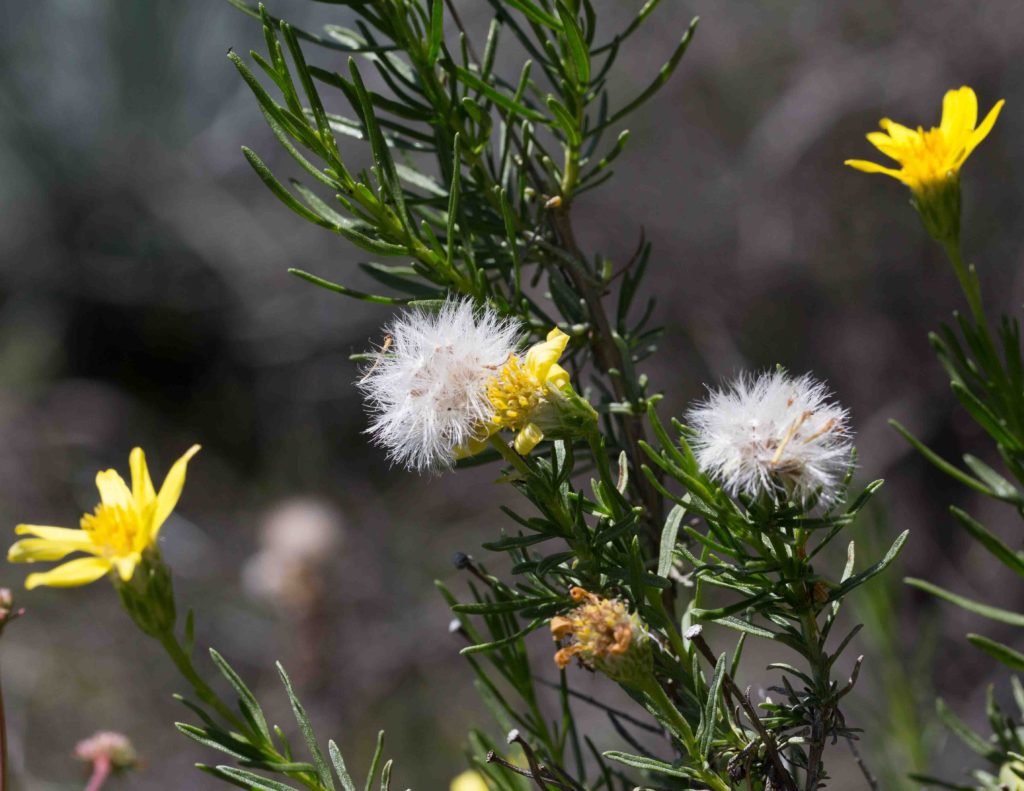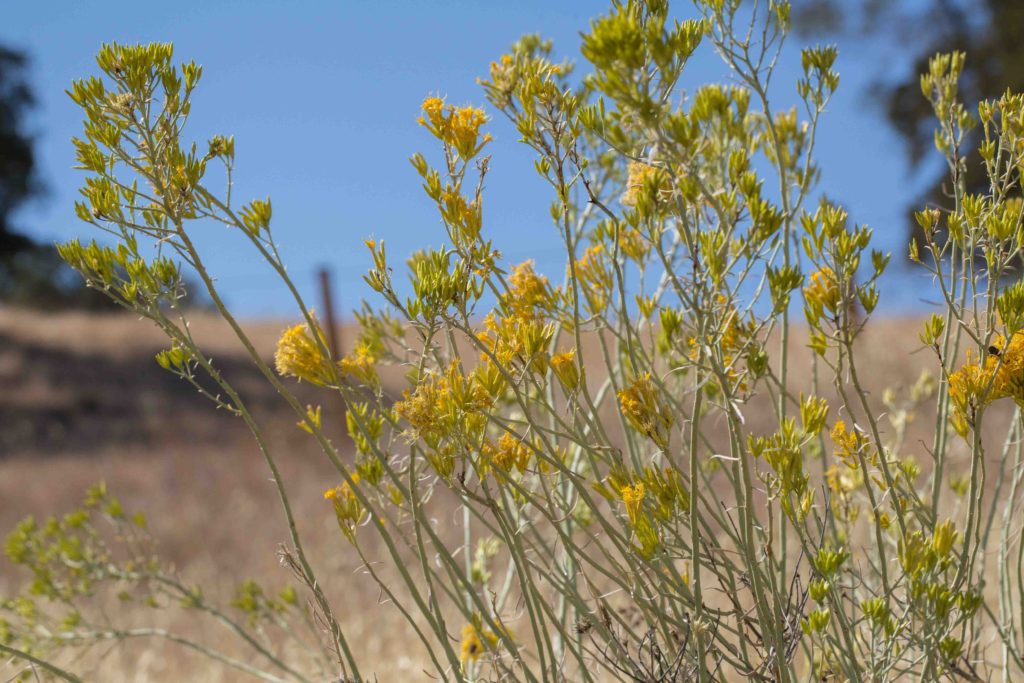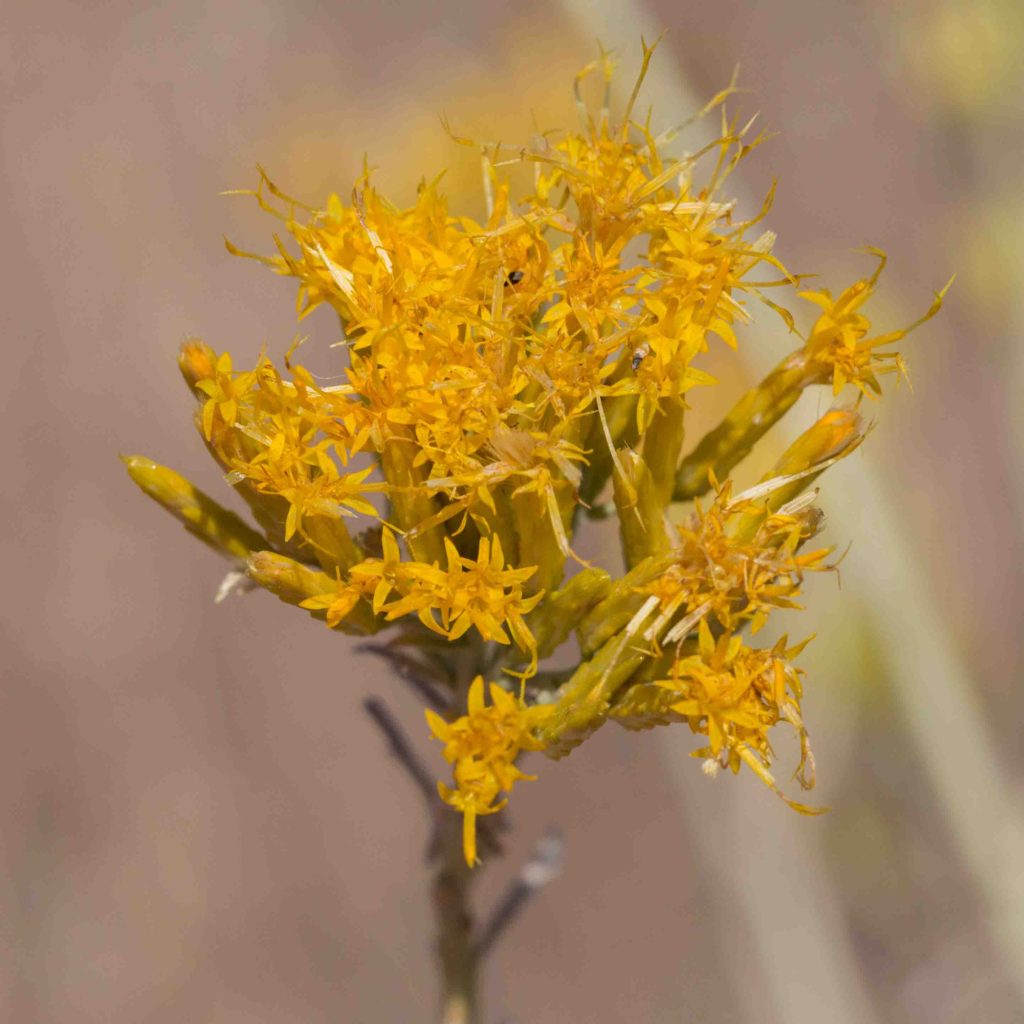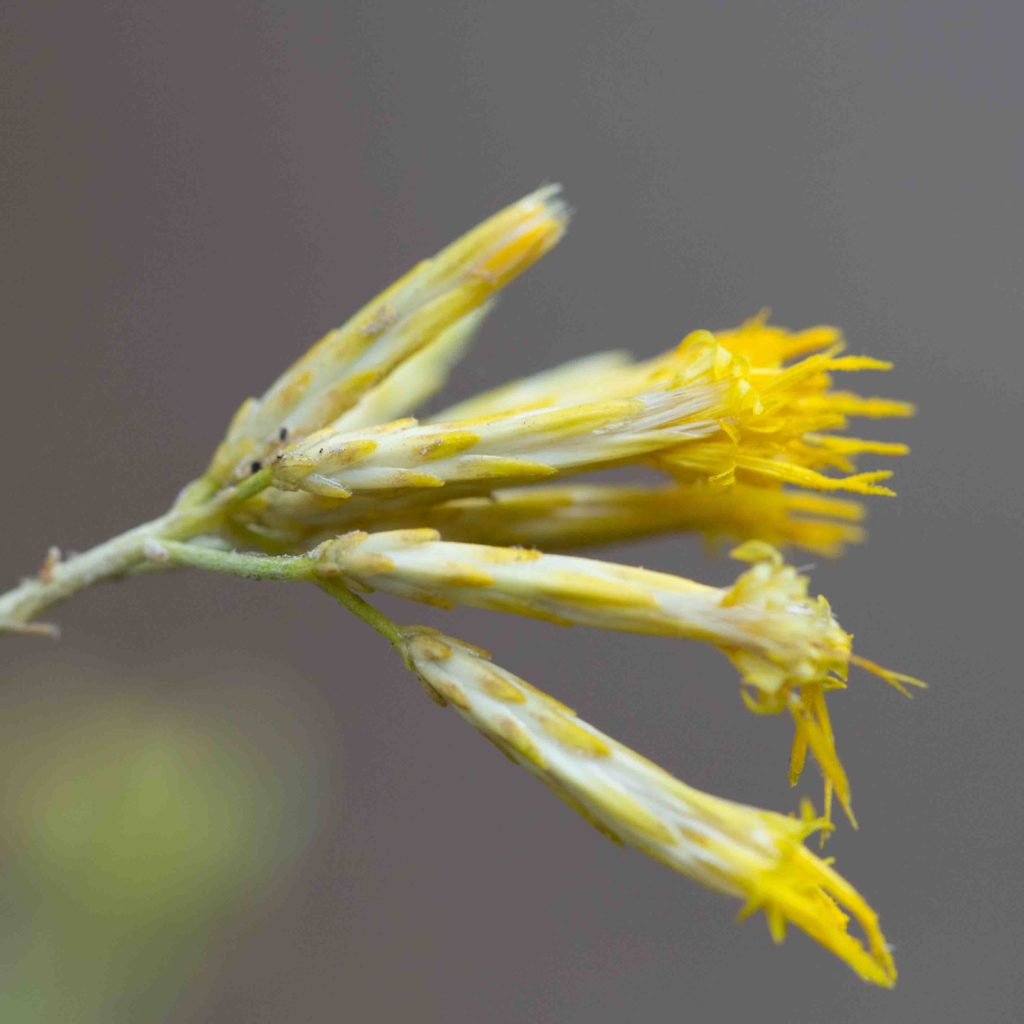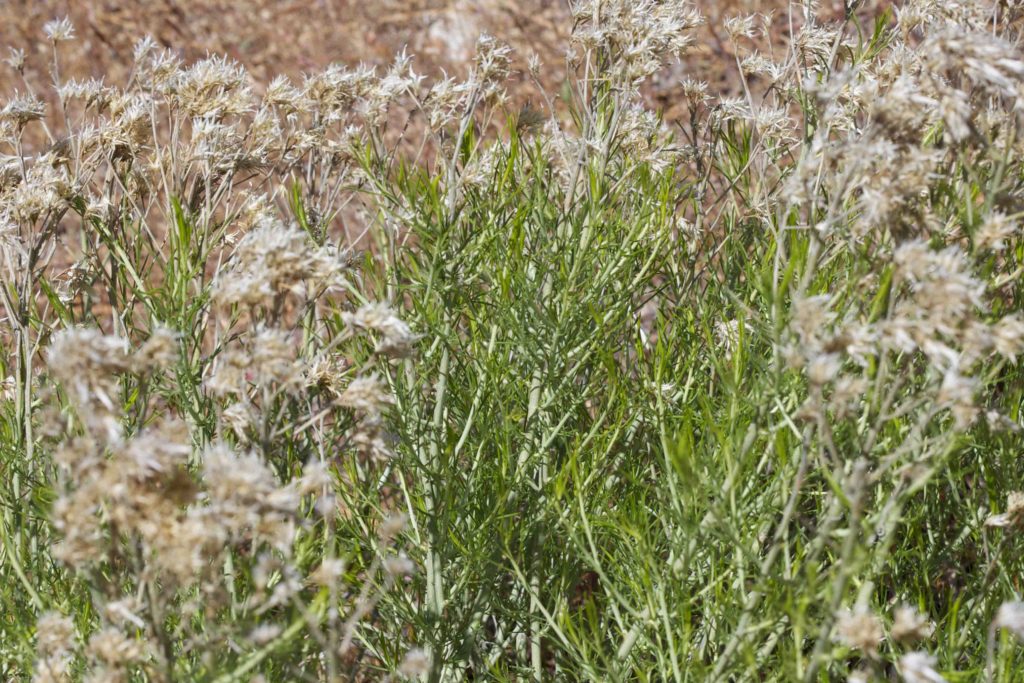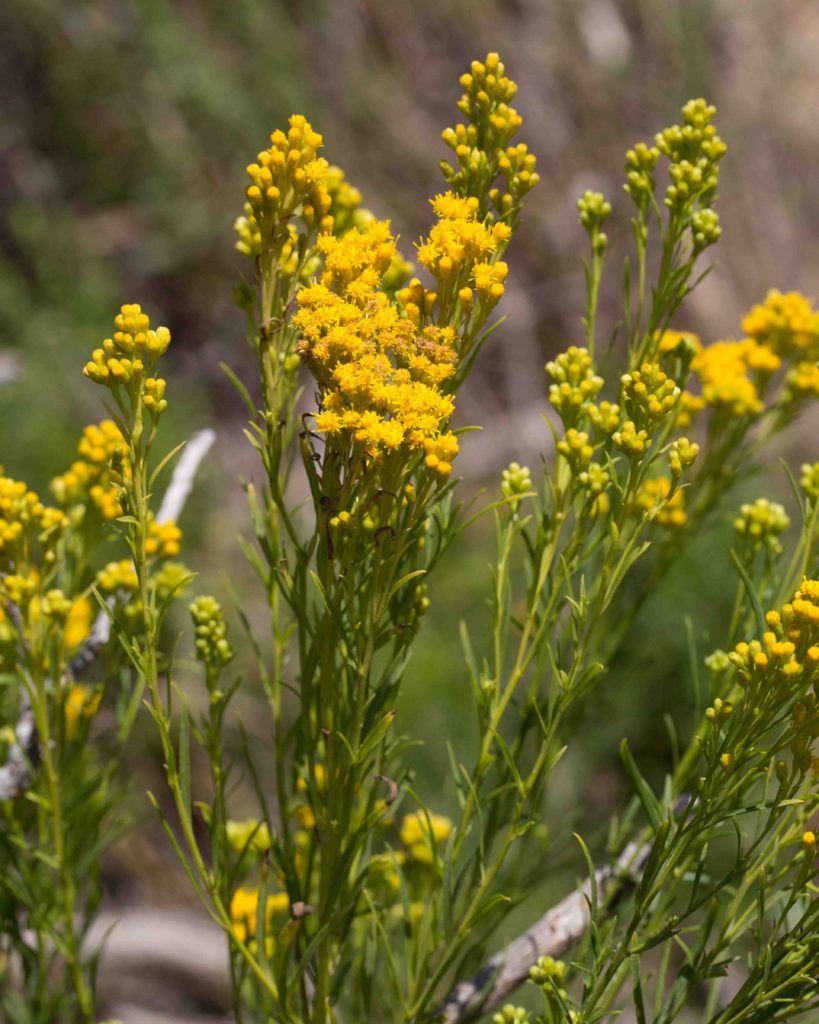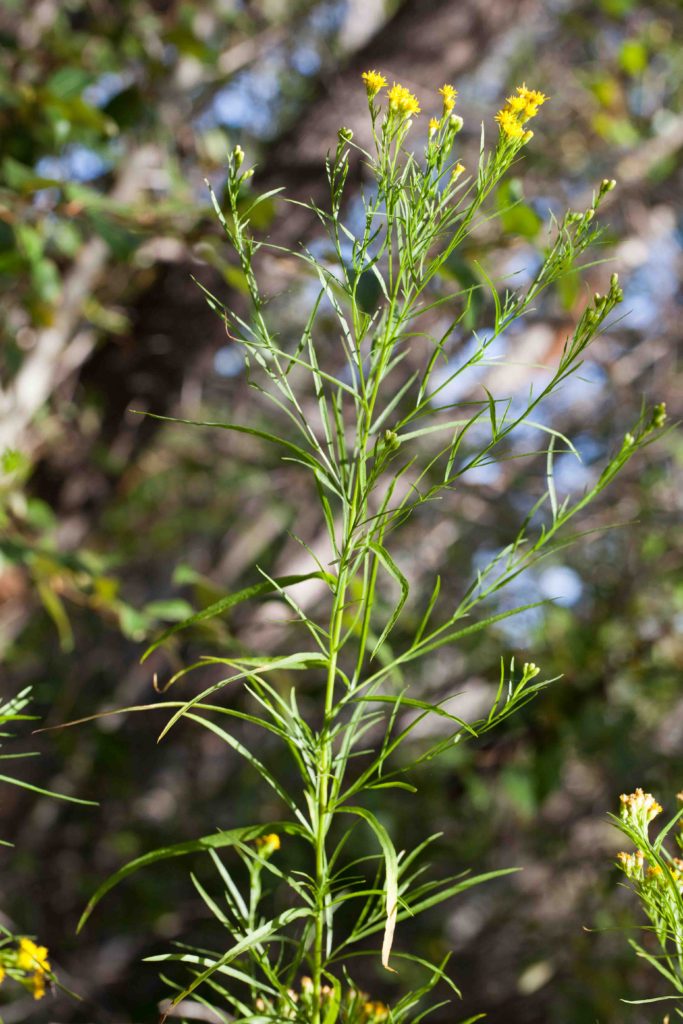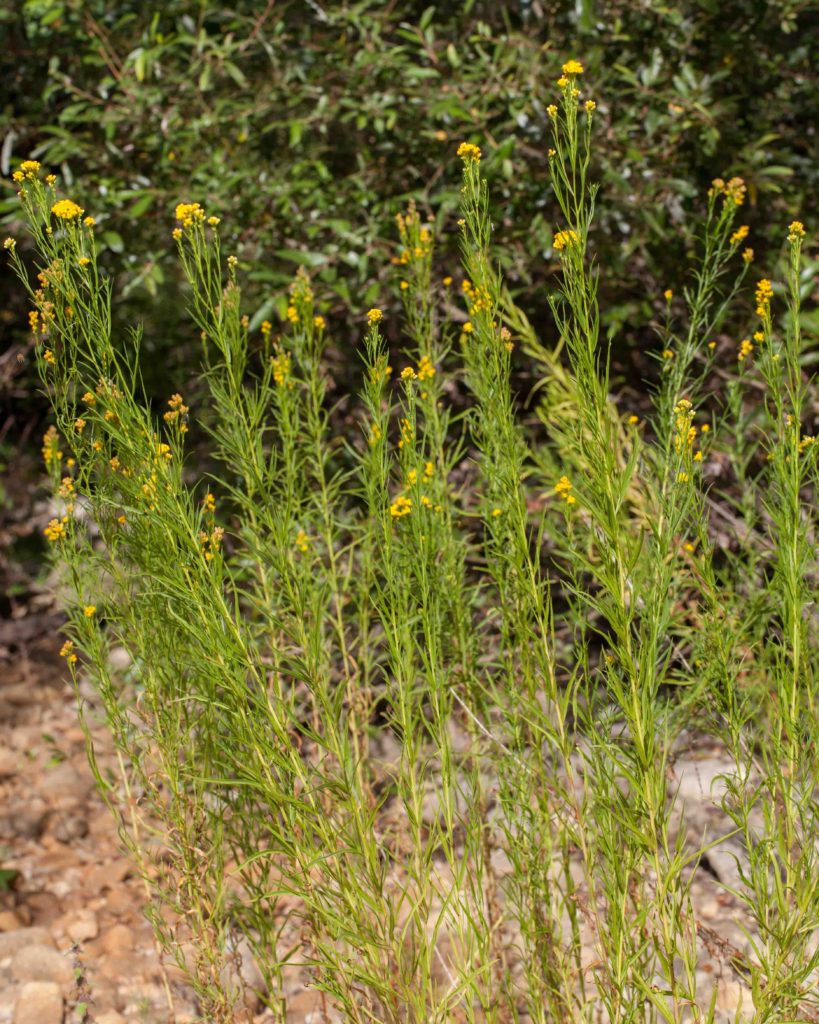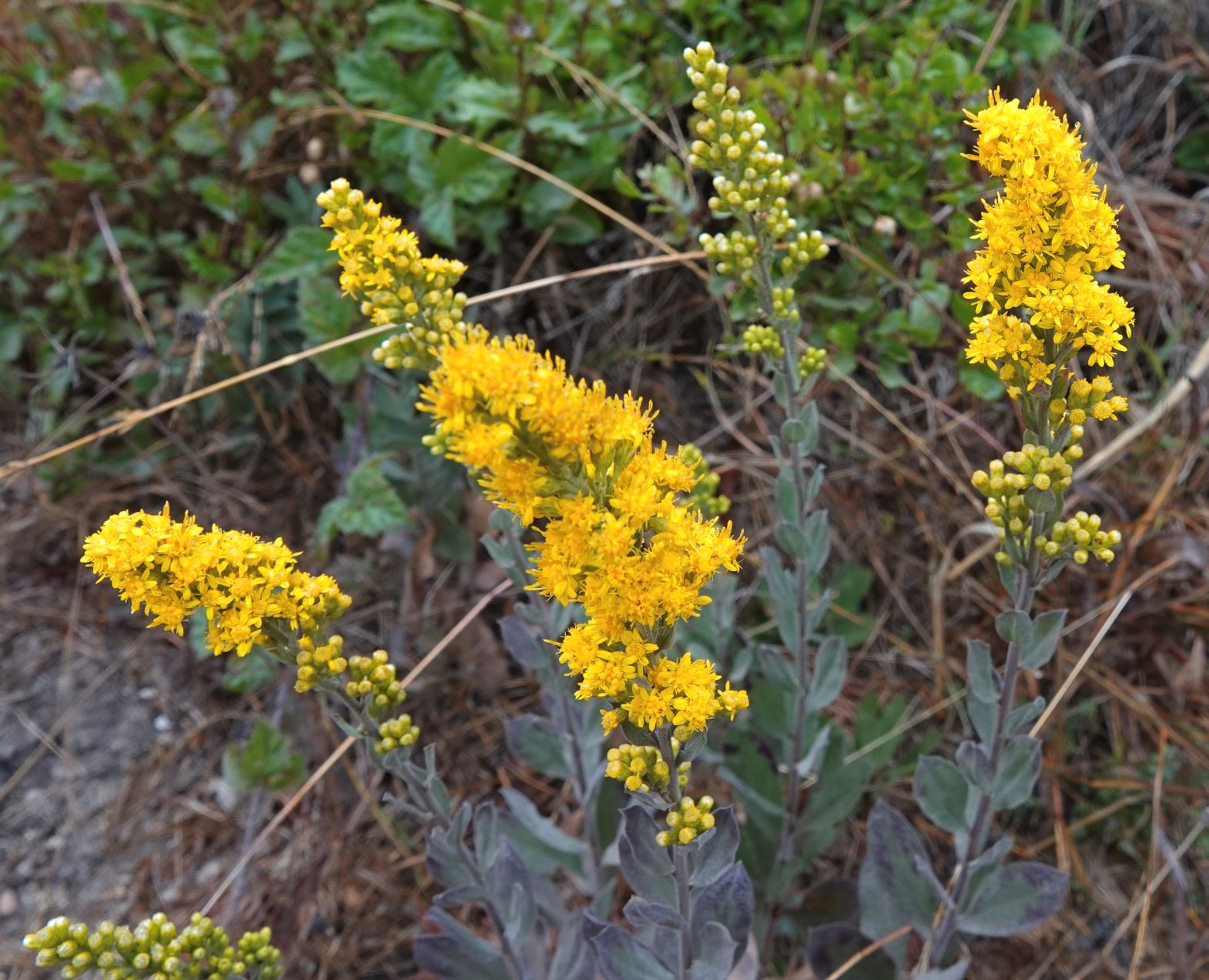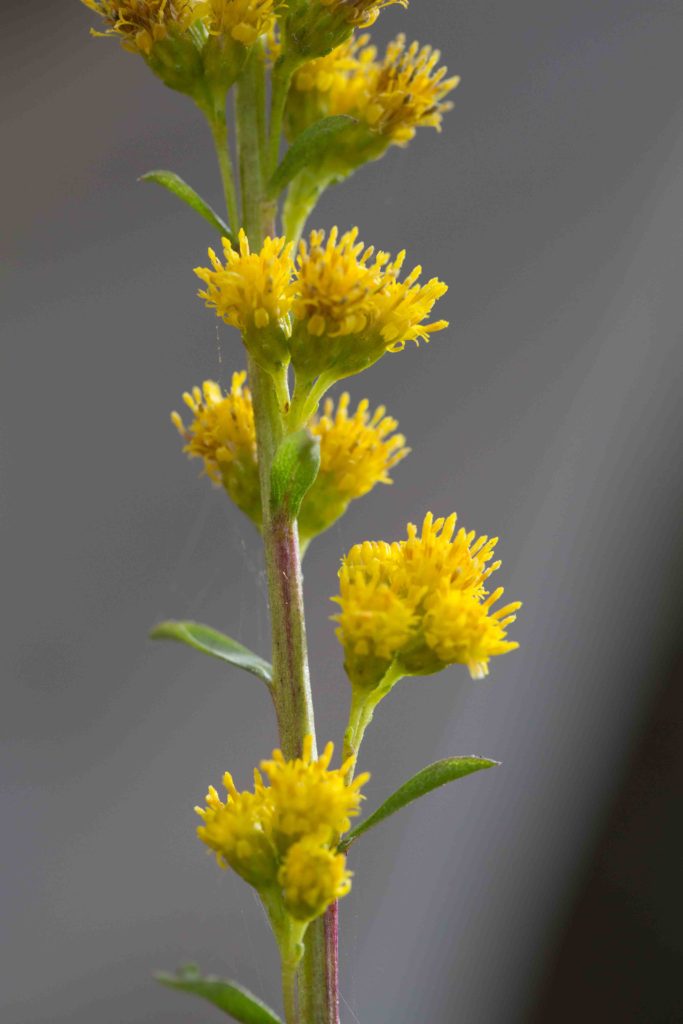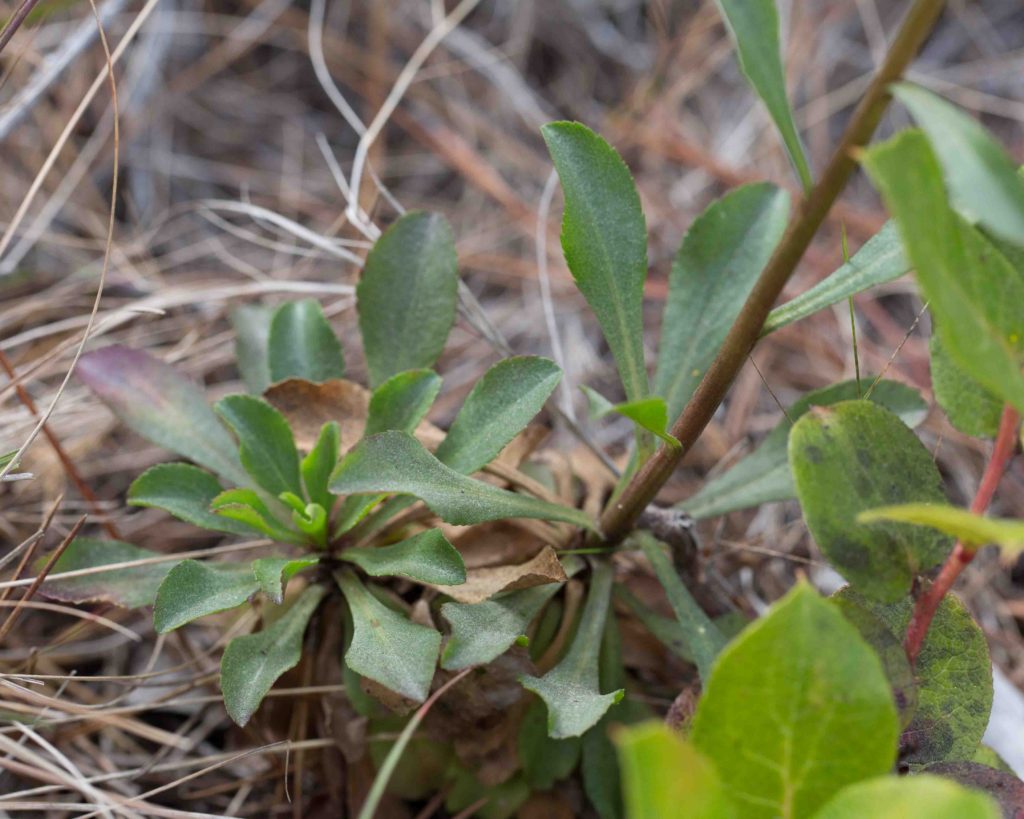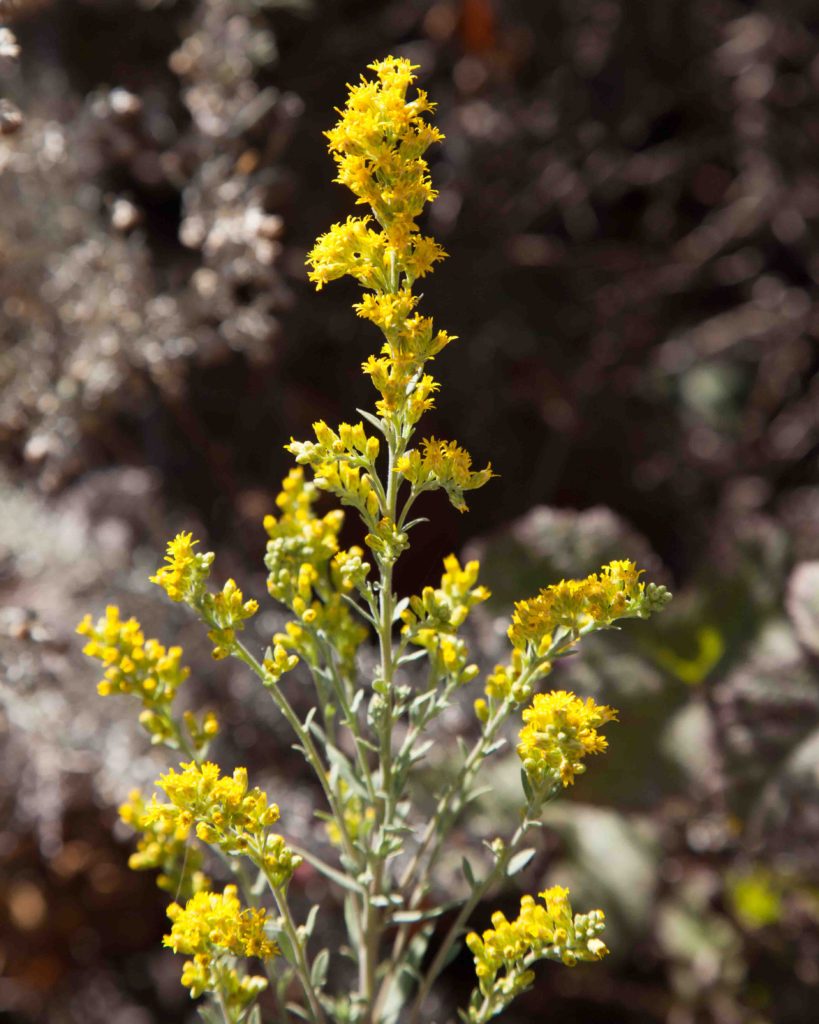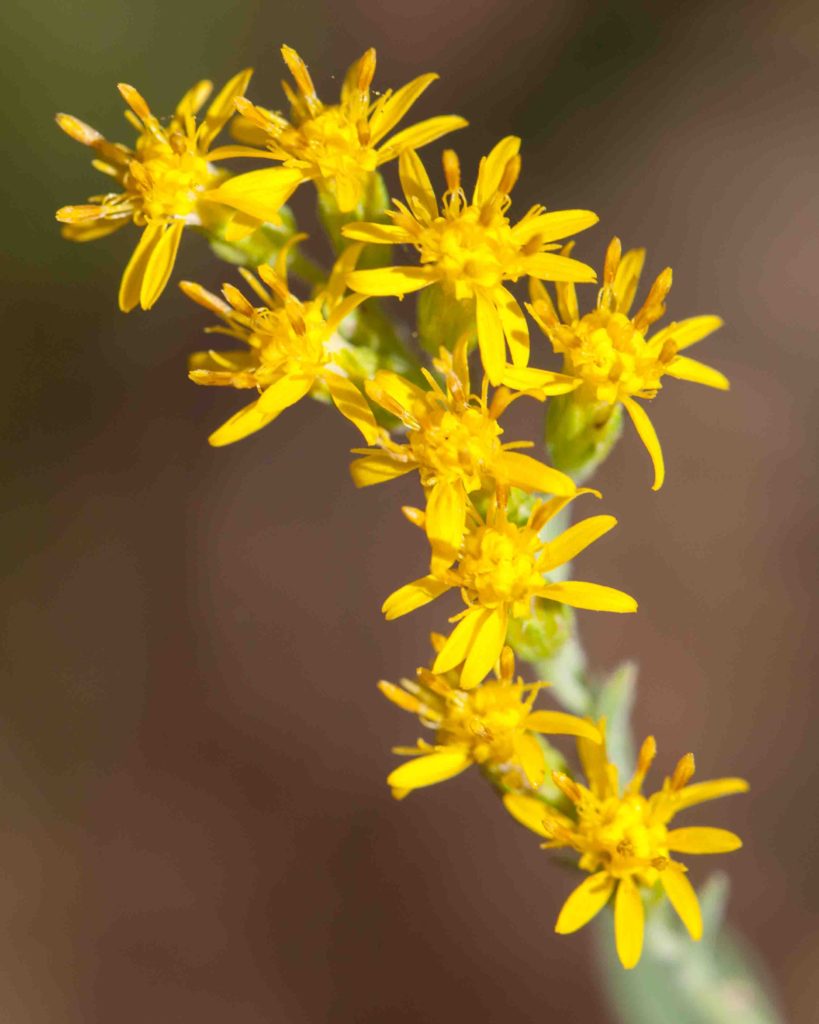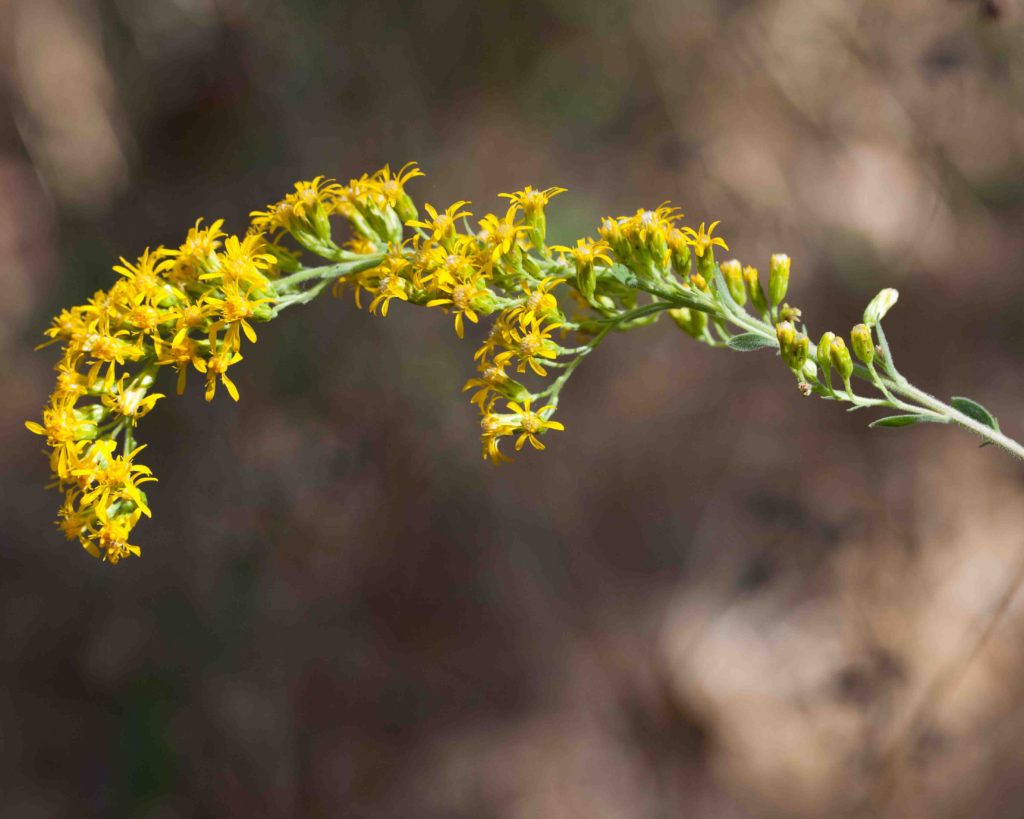Asteraceae: Sunflower Family – Astereae Tribe: Goldenbush & Goldenrod
The Sunflower family is a very large family with over 25,000 members. Botanists subdivide the family into a number of tribes, of which 14 are present in Monterey County. The Astereae (Aster tribe) includes a diverse range of plants, some of which have clearly daisy-like flowers and others, even if the same genus, which do not. This page includes most of the “golden” named plants, except for Goldfields (Lasthenia, which has its own page), and some other Goldenbushes in the Hazardia and Isocoma genera.
Golden Fleece – Ericameria arborescens
Blooms:
Aug–Nov
Plant Height:
< 5 m
Flower Size:
Small cluster
Origin:
Native
Habitat:
Open chaparral
Notes:
At first sight, this might be confused with Western Goldenrod (Euthamia occidentalis, see below), because both have many narrow leaves and clusters of small, bright yellow flowers. However, Golden Fleece is a chaparral shrub, and its flower heads comprise only disk flowers. Its leaves have sharp tips.
Mock Heather – Ericameria ericoides
Blooms:
Aug–Nov
Plant Height:
up to 2 m
Flower Size:
Medium cluster
Origin:
Native
Habitat:
Open sunny areas, coastal and inland
Notes:
The appearance of this plant varies widely according to its habitat. Immediately by the coast, it is low growing and compact. But inland, it may be a medium-sized and rather leggy shrub. The leaves are small and linear, and the axillary leaves are in distinctive flat, fan-shaped clusters. Flower heads have 2–6 ray flowers and 8–14 disk flowers. Heads with only 3 ray flowers are common, resembling an airplane propeller. Fruits have a prominent white to tan pappus. Photos #1-2 by CJH.
Eastwood’s Goldenbush – Ericameria fasciculata
Blooms:
Aug–Nov
Plant Height:
< 5 m
Flower Size:
Small cluster
Origin:
Native
Rare or Endangered?
Yes – 1b.1
Habitat:
Sandy soils, coastal
Notes:
Similar in appearance to the Golden Fleece (Ericameria arborescens, see above), but much smaller and has ray flowers (1–6 of them). It can be distinguished from Mock Heather (E. ericoides, see above) by its very different leaves, and by the outer phyllary tips, which are not abruptly pointed and not leaf-like. Fruits have a silky, densely hairy pappus. Endemic to Monterey County. Caution: there are a few other plants called “Goldenbush”, in the Hazardia and Isocoma genera.
Interior Goldenbush – Ericameria linearifolia
Blooms:
Mar–May
Plant Height:
40–150 cm
Flower Size:
Medium
Origin:
Native
Habitat:
Arid banks and slopes
Notes:
A much-branched shrub, found in the southeastern part of the county. It has 12–18 ray flowers (occasionally fewer), 9–20 mm in length. Stems and leaves are sticky. Caution: there are a few other plants called “Goldenbush”, in the Hazardia and Isocoma genera.
Mojave Rabbitbrush – Ericameria nauseosa var. mohavensis
Blooms:
Aug–Oct
Plant Height:
0.5–2.8 m
Flower Size:
Small cluster
Origin:
Native
Habitat:
Dry scrub above 400 m
Notes:
A spreading shrub, generally smaller and more compact at higher elevations. There are clusters of discoid flowers (no ray flowers). The flowers have a long-exserted style and spreading lobes. The threadlike leaves are important in recognizing this variety. The stems are nearly leafless at flowering time, densely tomentose, green becoming white. Found on Chews Ridge, and near the top of Mustang Grade.
Grass-leaved Western Goldenrod – Euthamia occidentalis
Blooms:
July–Nov
Plant Height:
0.6–2 m
Flower Size:
Small cluster
Origin:
Native
Habitat:
Streambanks & damp places
Notes:
Somewhat similar in appearance to Golden Fleece (Ericameria arborescens, see above), but slender, upright and not shrubby. The flower heads have both ray (15–28) and disk (6–18) flowers. The narrow leaves are not sharp-tipped. Like many riparian dwellers, its leaves may shrivel and drop to conserve water in times of drought.
Dune Goldenrod – Solidago spathulata
Blooms:
May–Nov
Plant Height:
10–50 cm
Flower Size:
Small cluster
Origin:
Native
Habitat:
Dunes & headlands below 600 m
Notes:
Resembles California Goldenrod (Solidago velutina subsp. californica, see below) but is a smaller plant. The compact flower heads have 4–10 very small (2–4 mm) ray flowers. The spoon-shaped leaves give the plant its scientific name. Leaf surfaces are glabrous, and the phyllaries oblong and blunt. Photo #1 by CJH.
California Goldenrod – Solidago velutina subsp. californica
Blooms:
July–Oct
Plant Height:
20–150 cm
Flower Size:
Large cluster
Origin:
Native
Habitat:
Grassland & woodland margins
Notes:
A different genus from the Grass-leaved Western Goldenrod (Euthamia occidentalis, see above), but the inflorescences are similar, each with 6–11 ray flowers. The plant may grow in a spike, with the flower-head in a loose arch or a one-sided pyramid or wand. The oblanceolate to ovate leaves have tapered bases and are alternate, decreasing noticeably in size towards the top of the stem.
